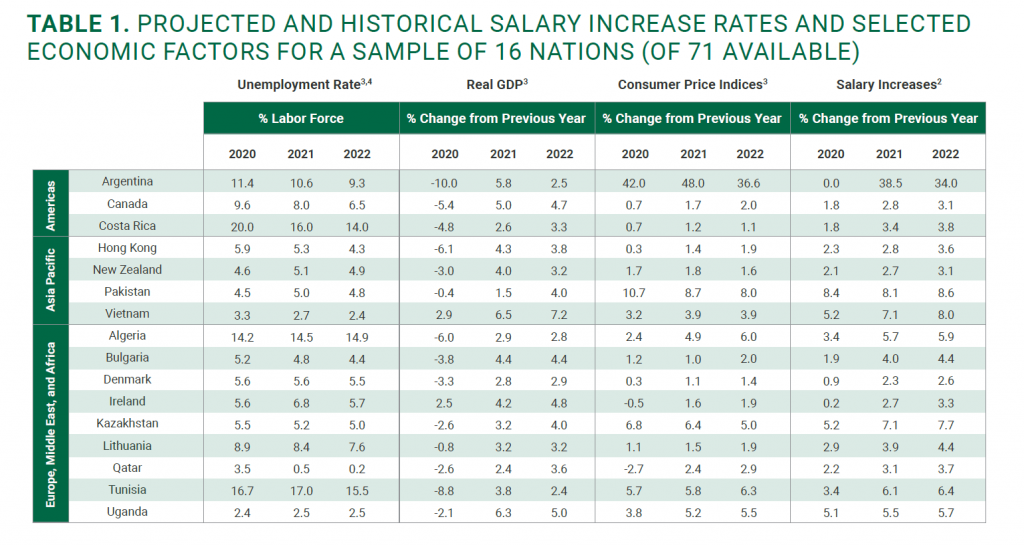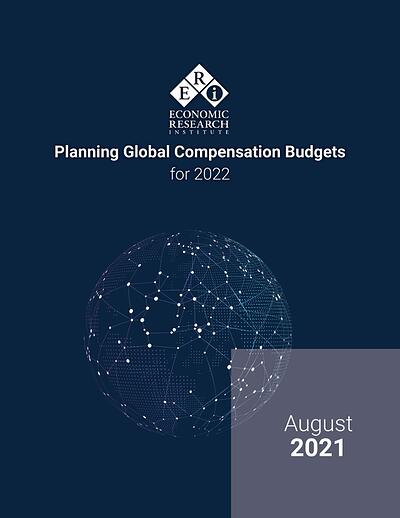This blog post is comprised of excerpts from ERI’s Planning Global Compensation Budgets for 2022, first published in August 2021. For a more in-depth look at ERI’s salary projections, download the complete white paper here.
With over a year since the pandemic began, the accumulated costs − both human and economic − have been significant. However, with the advancement of public health initiatives, including the distribution of vaccines and more effective treatments, the outlook for late 2021 and 2022 looks more positive than for 2020 and early 2021.
In the April 2021 World Economic Outlook (WEO) report, the IMF notes subdued wage growth; however, this does not apply evenly in all locations and sectors. We are seeing some sectors in the US having difficulty attracting labor despite reduced overall employment levels. As with short-term fluctuations in inflation, it remains to be seen if this is a signal to a longer-term shift away from slow wage growth observed in many advanced economies or a function of business recovery being ahead of workforce recovery due to both health and policy effects.
While previous quarters showed inconsistent measures of available labor in the marketplace (called slack), current economic indicators all point towards a lack of labor in the economy. A tight labor market frequently means that organizations must increase compensation to attract employees.
KEY ASSUMPTIONS
The continued extreme uncertainty in the WEO report is due to the broad extent and developing nature of the pandemic. Several assumptions were made to compile these revised data.
OVERALL GDP
Beyond 2022, global growth is projected to moderate to 3.3% into the medium term. Persistent damage to supply potential across both advanced and emerging market economies and slower labor force growth because of existing pre-pandemic issues are factors at play here.
OVERALL INFLATION
Volatility in inflation is expected to be short lived. Baseline projections show a return of inflation to its long-term average as the remaining slack subsides only gradually and commodity-driven base effects fade away.
OVERALL EMPLOYMENT
Unemployment rates have risen by about 1.5 percentage points above their pre-pandemic averages in both advanced and emerging market and developing economies. Labor force participation has also dropped.
PROJECTED 2022 SALARY INCREASES BY COUNTRY AND HISTORICAL TRENDS
An analysis of projections for 2022 salary trends across 71 countries was conducted to support businesses in next year’s salary increase budgeting. See Table 1 below for some selected results of these analyses – a full table of the results is available in ERI’s Salary Increase Survey & Forecast.

CONCLUSION
Varying responses to COVID-19 and continued unpredictability of the pandemic have affected regions differently. Visit ERI’s blog for more information about compensation and salary trends during the pandemic and how future compensation is expected to change between different locations.
Download ERI’s Planning Global Compensation Budgets for 2022 white paper for a deeper dive into how the pandemic impacts salary, unemployment rates, gross domestic product (GDP), and consumer price Index (CPI) by country.



